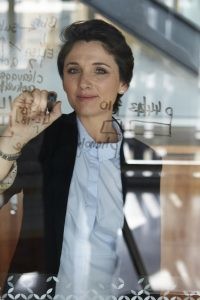2017 Women in Science Fellowships awarded

The winners of the 2017 L’Oréal-UNESCO for Women in Science Fellowships have been announced, with five lucky early-career female scientists receiving $25,000 to support them in their specialist area of research.
With women accounting for only 30% of the world’s researchers, there are still great barriers that discourage women from entering the profession and obstacles continue to block progress for those already in the field. The L’Oréal Foundation and UNESCO (the United Nations Educational, Scientific and Cultural Organization) have spent the past 20 years trying to change this, striving to support and recognise accomplished women researchers and to encourage more young women to enter the profession.
The L’Oréal-UNESCO For Women in Science Australia & New Zealand Fellowships were launched in 2007 (with the New Zealand Fellowship first awarded in 2015), and have so far recognised 31 outstanding local scientists. Each Fellow is awarded $25,000 for a one-year project, which they may choose to spend on scientific equipment, childcare costs, conference and travel costs, or other items they may need to continue their research.
Information on this year’s Fellows and their projects can be found below.
Dr Deborah Williamson (Doherty Institute) — Tackling the threat of antibiotic resistance
The single most powerful contributor to the development of antibiotic resistance is the global unrestrained use of antibiotics. Dr Williamson hypothesises that widespread use of antibiotics and antiseptics is causing the increased development of Staphylococcus aureus (S. aureus) strains that are co-resistant to multiple classes of antibiotics, leading to the clinical failure of antibiotic therapy. Her research will unravel the mechanisms of antibiotic resistance for this common bacterium, as well as form a crucial framework for investigating antibiotic resistance in other bacteria.
Dr Jaclyn Pearson (Hudson Institute) — Understanding the most critical contributing factors to inflammatory bowel disease (IBD)
Many studies have tried to identify the underlying mechanisms of inflammatory bowel disease (IBD), but given the complexity of immune response in the gut environment, much remains unknown and current treatments are only partially successful. Dr Pearson’s research will investigate the dysregulated immune response seen in IBD and understand how the gut microbiome plays a role in disease severity. She will look at a group of host proteins known to be key immune signalling factors that mediate inflammation, programmed cell death (apoptosis) and necroptosis, and determine which host proteins are essential in protecting against gut infection. Her findings will improve our understanding of the underlying mechanisms of IBD and inform future therapeutic development.
Dr Stephanie Simonds (Monash University) — Discovering the link between cardiovascular diseases (CVD) and obesity
Throughout her research, Dr Simonds noticed that cardiovascular disease was delayed in women, compared to men, until females went through menopause. She wondered why obese females develop elevated blood pressure much slower than obese males, despite comparable concentrations of the fat-derived hormone leptin. She discovered that this protection granted to females is a result of oestrogen, and experimentally showed when the naturally produced levels of oestrogen were removed (as would occur with menopause), a rapid development of hypertension in obese females was seen. She now aims to understand the role of oestrogen in the brain to decrease blood pressure premenopausally in obesity, in work that will critically aid in the development of new therapeutic opportunities for the treatment of cardiovascular diseases in obesity.
Dr Jacq Romero (University of Queensland) — Understanding the world in quantum
The quantum world holds a lot of potential for the future, but is not yet fully understood. Dr Romero creates large quantum alphabets using a property of light known as the orbital angular momentum (or OAM). By creating an alphabet where the different OAMs, which are the different helical twist formations of a beam of light, serve as the different letters, she is able to create a quantum encoding system of a theoretically infinite capacity. By creating quantum alphabets, she is able to unlock some of the mysteries of the very puzzling properties of higher dimension quantum information.
Dr Matire Harwood (University of Auckland) — Improving the health for Indigenous communities
Dr Harwood plans to review the effects of Indigenous-led interventions for long-term conditions including cardiovascular disease, stroke, type 2 diabetes, respiratory conditions, obesity and smoking. Her research suggests that Indigenous-led interventions contribute to better outcomes for both Indigenous people and the nation. One of her approaches includes the implementation of individualised programs for those suffering long-term health conditions, where Indigenous people develop a healthcare approach that works best for them. She also works closely with drug development researchers to develop different methods of medication and drug delivery, specific for Indigenous communities.
Govt announces $1.89bn package for health and medical research
The Australian Government is investing in a "once-in-a-generation transformation of health...
Accreditation Matters announces further speakers, MC
Respected journalist and presenter Steve Liebmann has been confirmed as host and MC for the...
Govt announces plan to boost medical science manufacturing
The Australian Government has released the Medical Science Co-investment Plan as part of its...







